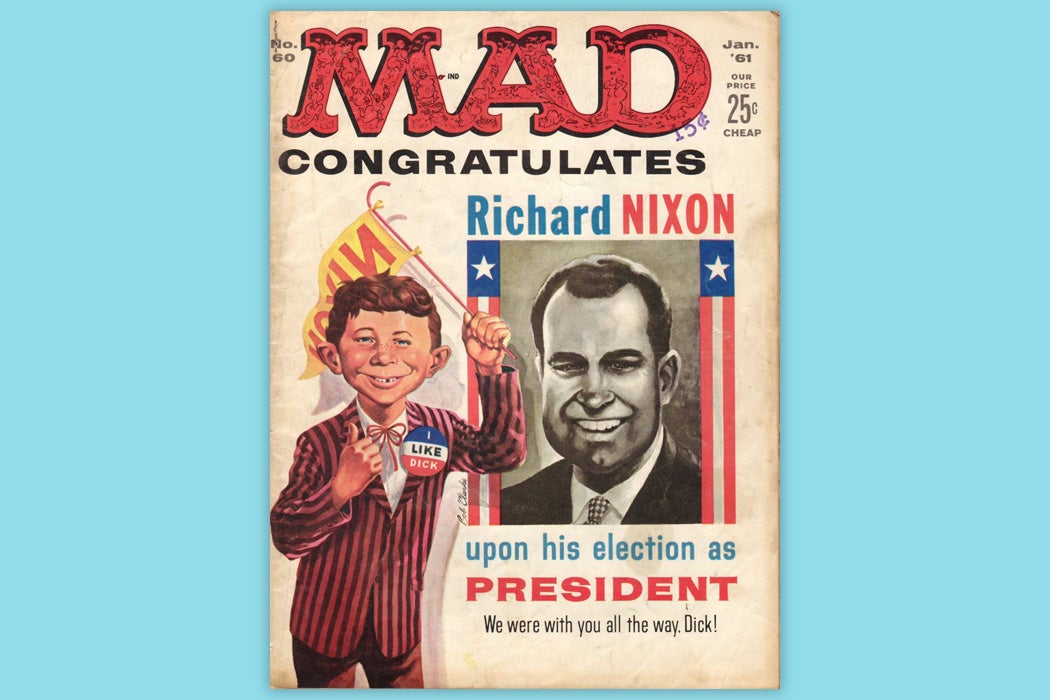Fifty years ago, on the night of June 17, 1972, security guard Frank Wills (no relation) noticed that doors in the underground parking garage of the Watergate Office Building in Washington, DC, were taped open. Cops working undercover as hippies responded to his call and arrested five men inside the offices of the Democratic National Committee. It was a curious place to find burglars.
The burglars turned out to be “White House Plumbers.” With members including former FBI and CIA agents and Cuban exiles, the Plumbers comprised a special investigations unit tasked with stopping information from leaking out of the White House. Adding to the interesting details of the night, the gang’s lookout didn’t see the arrival of the police car because he was engrossed in old movie, The Attack of the Puppet People, on the television in the bar across the street.
The arrests were the opening act of a scandal that shook the nation. It involved high crimes and misdemeanors, vast political corruption, and subversion of the Constitution by President Richard M. Nixon, his Attorney General, several White House advisors and lawyers, and the goons and even kidnappers working for the Committee for the Re-election of the President (CRP). The CRP was often mockingly, but tellingly, referred to as “CREEP.”
“Watergate” unraveled slowly, but ultimately led to Nixon’s resignation just over two years after the Watergate arrests in the face of a sure Senate impeachment. Mad magazine, which had followed Nixon’s career with unusual attention for a satirical publication, could very well have said “I told ya so!”
Scholar Nicholas Labarre explores Mad’s fascination with Nixon, noting, “Richard Nixon’s ascent to the fore of the American political scene closely parallels the history of Mad […]. Nixon’s ‘Checkers Speech,’ in which he famously denied accusations regarding his campaign finances, was given on September 23, 1952. Coincidentally, the first issue of Mad is cover-dated October-November 1952, and it was probably put on sale around August of the same year.”
No other personality appeared more often on the cover during the first fifty years of the magazine’s life. Initially, Mad was interested in Nixon mostly as a celebrity public figure, not as a controversial politician. He was a brand, with a face made for cartoonists, to be referenced and mocked like any other brand in the magazine’s pages.
Labarre writes, “Before 1970, Nixon was faulted in Mad mostly for his character [and/or as] a symptom of broader issues—the conflation of politics and show business or the inherent duplicity of politicians.”
Mad made its bones by gleefully satirizing advertising, commercials, television, and other aspects of popular culture. It wasn’t political in any conventional sense, though it was certainly anti-authoritarian—publisher William Gaines had converted Mad the comic into Mad the magazine to escape comic book censorship.
In 1963, Esquire parodied Mad as Bad for its lack of political coverage. While Mad may have been a bible for some of the counter-culture, the New Left despaired of its non-activism. Al Feldstein, who edited the magazine through the 1960s and into the early 1970s, once claimed, “Our job was to educate kids, not tell them what to do. We’re not revolutionists.”
Weekly Newsletter
Nonetheless, Nixon’s “lack of principles,” “sore loser” persona, and heavily shadowed jowls were irresistible to the magazine. And Mad’s interest in “Tricky Dick” outlasted that of the mainstream media during Nixon’s years away from the limelight, between his 1962 loss in the California gubernatorial race and his winning of the Presidency in 1968.
Labarre argues that Mad’s stance became more political once Nixon and his attack-dog Vice President, Spiro Agnew, launched an offensive against the media. From 1970 to 1975, Nixon, in the midst of the secret bombing of Cambodia and cover-up of Watergate, “ended up being depicted, among other things, as a Nazi, a gangster, a violent cop, a traitor to his faith, the rallying cry for all discontents, and finally, as ‘an illness lasting five years.’”
Even after his resignation, Nixon continued to appear in the magazine on a regular basis. He was enough to drive them stark, raving MAD!







